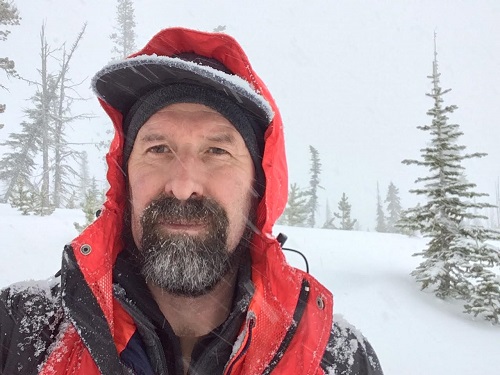
Using his outdoor experience and list of 10 essential items, snowshoer Wally Fosmore of Shoreline, Wash. survived the elements and a night in the back country before finding his way to safety at a rendezvous point with local emergency services personnel.
Even the most experienced snowshoers sometimes face challenges from Mother Nature. More times than not, a single bad decision will result in a bad outcome, and if you’re not prepared it can truly be catastrophic.
Two days after Christmas, Wally Fosmore and his son Preston snowshoed along McCue Ridge at about 6,000 feet elevation. This pristine setting overlooks the eastern edge of the Alpine Lakes Wilderness Area in central Washington near the town of Leavenworth. At about the halfway point on the trail, Preston chose to take an alternate route back to camp, and Wally decided to finish the route he was on, a trail he’d been on dozens of times. “Soon after Preston headed back, I bumped into another snowshoeing couple and we traveled together for about an hour before they decided to take a marked route back to camp, since daylight was getting short,” said Wally. “I decided to keep going. I knew I was pushing the limit for the remaining hours and minutes of daylight, but felt confident since I had been on that trail many times before.”
To help guide him on the Ridge Crest Trail, Wally had followed a line of bamboo pole trail markers. Unfortunately, soon after gaining the ridgeline, a snow squall from the southwest quickly engulfed him, reducing visibility to near zero, making it difficult navigating from pole to pole. After searching back and forth for more poles, he came to what he thought was the last trail marker prior to the anticipated descent back down to camp. “I really thought I was at the last pole, but I was mistaken.” In hindsight, he reflected, “Right then, I should have taken a compass reading to verify exactly where I was, but I was feeling confident that I was doing the right thing.”
After descending about 600 feet and with darkness fast approaching in stormy conditions, Wally suspected that he may have passed the point of no return down the wrong side of the ridge.
A night in the wilderness
When he recognized that he may have been off his intended course, Wally checked for a signal and then called Preston on his cell phone. “I asked him to step outside the camp and blow on his emergency whistle so that I could verify his position,” said Wally, who never heard the whistle. By then, the darkness and storm conditions had now completely descended. “I told Preston of my intentions to continue the remaining 1,500 feet down into the Chiwaukum Creek drainage where I would spend the night, then hike out in the morning.”
Because of the steep terrain, the phone signal was lost. To preserve the remaining 18 percent charge, Wally turned off his phone for the night. On the edge of Chiwaukum Creek at the bottom of the canyon, and navigating with his headlamp, Wally found a “textbook example” of a perfect emergency shelter. Two large hemlock trees, three feet in diameter, had fallen across each other at a 90 degree angle; they provided the ideal place to spend the night. He shed his snowshoes and tunneled into the five feet of fresh powder finding a cramped, but adequate, cave-like space to get out of the weather until morning. Besides creating the sheltered space, the fallen trees had also brought down and trapped some brushy trees that had been able to dry out and stay dry in spite of the surrounding deep snow.
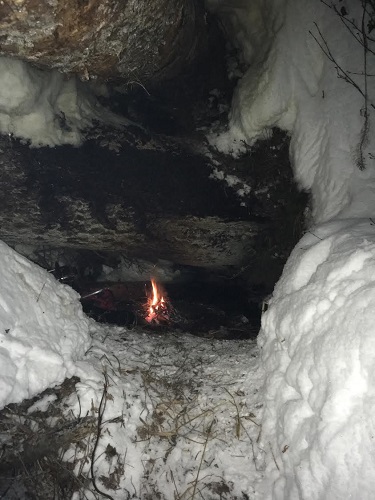
That night, hunched in the cramped confines of his makeshift camp, Wally dined by firelight on warmed sardines, crackers, and honey peanuts. The gradually melting ice revealed that the base of the fire was on a gravel bar, just three feet from the edge of the creek, which provided an easy source of fresh water. Wally melted the ice crystals out of the drinking water by placing his lightweight stainless steel water bottle carefully along the edge of his small fire. Though it sounds rather like a romantic setting, it was clearly one of survival.
Experience and Essentials
An experienced outdoorsman, former scoutmaster, and former search and rescue volunteer, Wally had both taken and taught his sons and other boys in the Boy Scout Troop several winter survival training courses. He needed to draw on all those experiences to get him through this one. Throughout the ordeal, he used all of his skills and a list of 10 essential items to take along when snowshoeing, even if it’s for a day trip, which this was supposed to be. The simple tools that contributed to Wally’s survival that freezing night at 4,000 feet elevation in the central Washington Cascade Mountain wilderness included the following:
• Extra clothes
• Extra food
• Plastic shelter (“space blanket”)
• Map
• Compass
• Matches and lighter
• Candle (for fire starter)
• Knife
• First aid kit
• Flashlight (headlamp and extra batteries)
• Referee whistle
For about 25 years, Wally has carried the same small card, published by the local Explorer Search and Rescue Organization, in his wallet just for a reminder of things needed for any outdoor outing. Many years ago he added one more item to the original list: A referee whistle. He explains: “This signal device is essential when trying to contact someone else, especially rescue personnel. After I heard the distant whine of the rescue crews snowmobile engines come to a stop, I started yelling in their direction, but it was to no avail. My voice was absorbed by the surrounding large trees and deep snow. My brass whistle was much louder than my voice and the rescue personnel were able to hear that when they could not hear my shouting.”
The rescue
When daylight finally arrived the next morning, Wally took a compass reading, and oriented his map based on the compass, the flow of the creek, and the high ridge to his south. While attempting to walk out, he was forced to cross the roiling whitewater creek about eight times just to have a place to walk. The creek banks alternated from cliffs on one side to the other, which forced him to cross on snow bridges of questionable strength. “While I was walking my way out, I crossed snow bridges that were extremely treacherous,” said Wally. “Every step was made with a prayer.”
Overall, the snow was about five feet deep on the level, but with the flotation provided by his snowshoes, the snow surface alternated between just above his knees to his hips; still a lot of weight to push for miles on end.
While snowshoeing throughout the day, he fell into a number of deep holes, through unsupported snow bridges and voids around and under the tangle of deadfall trees that had come down since the fire damage. Some of those falls left him swimming in snow up to his armpits, which further drained the energy level of this fit 60-year-old.
Early on the morning of Dec. 28, Wally had eaten a ration of his peanuts and other snacks and then hiked to the top of a small wooded ridge in the middle of the valley to gain a weak phone signal. From there, he was able to make a final call to Preston and another contact person back at camp explaining where he was and his intended hiking route back out to the highway. Wally’s cell phone was just about dead at this point.
Later that day, Chelan County Sheriff’s search and rescue helicopter scanned the heavily-timbered valley floor for visual contact with Wally. He saw and heard the chopper immediately and moved toward the most open spot available, a large grove of standing dead Ponderosa pines. Once they saw him, they made a supply drop, but the bag became stuck in a tree about 40 feet off the ground.
Wally did retrieve their second drop, which had couple of granola bars, water, and a note directing him to an old logging road and possibly a nearby cabin where they would meet up with him for the snowmobile ride out.
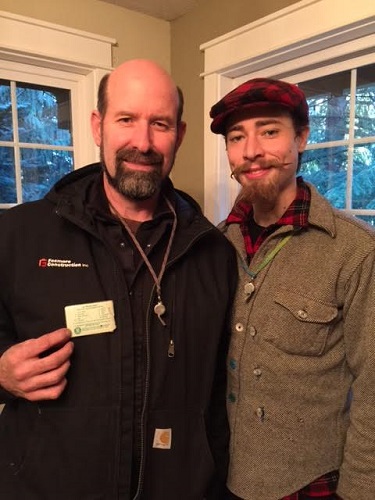
After hiking up to the old logging road to meet the Sheriff and their waiting snowmobiles, he was finally rescued after spending about 30 hours in the forest. He reflected that it was “Through God’s grace and dumb luck that I survived.” After the three mile ride back down to Hwy. 2, Wally Fosmore then received a belated Christmas present: A lingering bear hug from his son Preston and wife Melody.
Afterthoughts
To help other snowshoers recognize and prepare for the potential dangers while snowshoeing, Wally emphasized a few points. “The most important things to remember are those 11 essentials listed above; become familiar with and how to use them. It’s one thing to build a fire in your backyard, but it’s completely different to build a successful fire with poor weather conditions and poor fuel, like wet twigs, in the wilderness.”
He also shared that technology is not likely going to save you, as is evident with his dying cell phone and the sketchy reception you may or may not even have in the deep backcountry. That being said, he is planning to explore the latest offerings in GPS technology, but will continue to always carry his bag of 11 essentials.
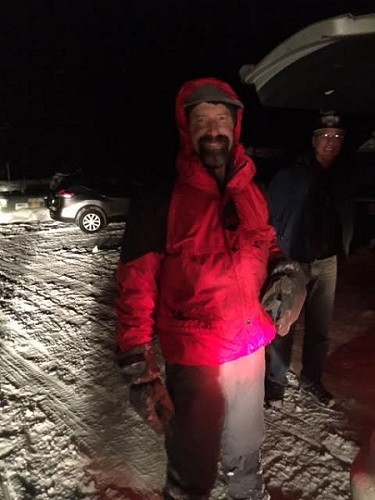
And finally, Wally has already scheduled his next family snowshoe outing – to the same central Washington location in early February.

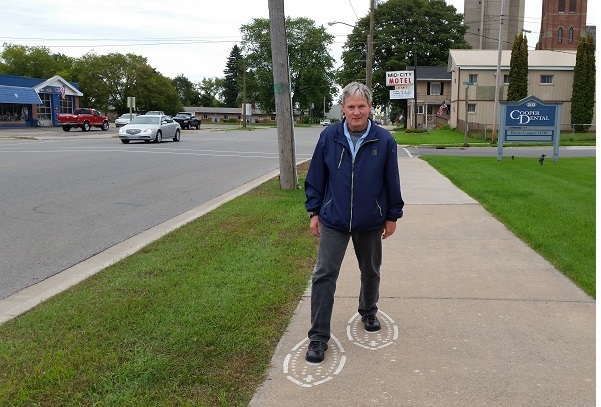
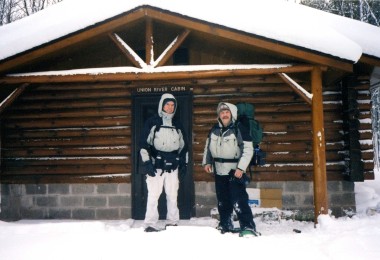
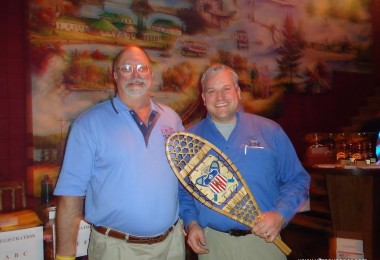

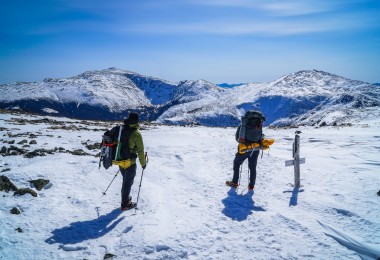

Leave a Comment